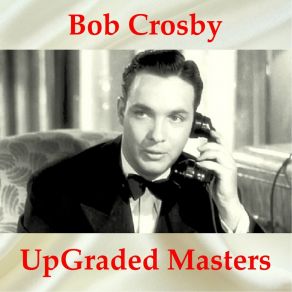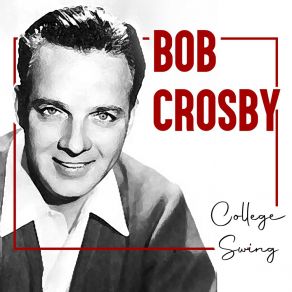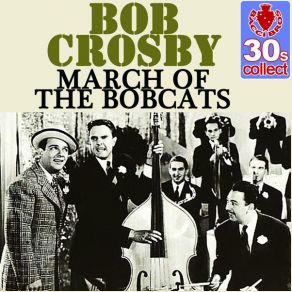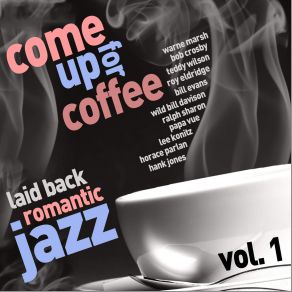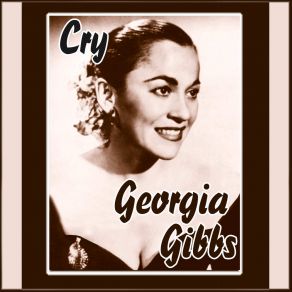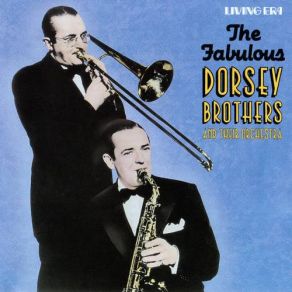Bob Crosby
Wikimp3 information about the music of Bob Crosby. On our website we have 70 albums and 70 collections of artist Bob Crosby. You can find useful information and download songs of this artist. We also know that Bob Crosby represents Jazz genres.
Biography
[Edit]Bob Crosby, Bing's younger brother, often found himself in the odd position of being the least important member of his own orchestra. Indeed, he couldn't play an instrument or read a note of music, which didn't stop him from enjoying a long career in music, in that very odd position. He was born George Robert Crosby in Spokane, Washington, in 1913, and like his older brother, he did start out on a conventional career path, attending college, and like brother Bing, he also dropped out of college in favor of getting work as a singer. Actually, it was a somewhat less direct route from student to crooner, as Crosby was, by his own account, supporting himself picking cucumbers in Spokane when bandleader Anson Weeks tapped him for the singer spot in his band, where he remained for two years, from 1932 through 1934. Those were tough years, as the effects of the Great Depression swelled and lingered, and it was good to have a steady gig, especially as he learned a lot about vocalizing during this period; he jumped to a six-month stay with the Dorsey Brothers' band in 1934, and then, in 1935, fate took a hand.
A group of musicians working for bandleader Ben Pollack had quit en masse and organized themselves under the direction of saxophonist Gil Rodin, as a cooperative venture, with all of the members owning an equal share in the group — the Casa Loma Orchestra had done the same thing at the start of the decade and were reaping big rewards, and this group had at least as much talent as the Casa Lomans did. What they needed was a vocalist who could also provide them with a name and personality that the public could appreciate; ironically, it was "Cork" O'Keefe, their agent — who'd also played a key role in organizing the Casa Lomans — who steered them toward Bob Crosby. He could, by then, sing in a winning, popular style, at his best moments nearly as well as his brother — and Bing Crosby by then was selling enough 78s to turn newly established Decca Records into a major label — and he had a personality that the listening public liked. And he had an unassuming ego that allowed him, even as the presumptive "leader," to yield center stage to the various soloists, which included trumpet man Yank Lawson, clarinetist Matty Matlock (later succeeded by Irving Fazola), and saxman Eddie Miller, and to top it off, they had Ray Bauduc, no less, as their drummer.
In the middle of that company was Crosby, an OK singer who held the popular audience. The band had its feet planted astride two — or three — musical worlds; Crosby's singing gave them their pop side and their personality, while arranger Bob Haggart (and, later, Matlock as well) wrote charts that were as contemporary as any jazz of the second half of the '30s; but the band also kept some aspects of its sound rooted in familiar '20s attributes, and their devotion to Dixieland jazz was unmistakable (especially with Miller, Bauduc, and Nappy Lamare, New Orleans natives all, in the lineup). Eventually, the Bobcats — or, sometimes, Bob Cats — coalesced from within the larger orchestra; a Dixieland octet, they proved phenomenally popular in their own right.
The 1935-1942 period was Crosby's heyday, with his band featuring such classic soloists as Billy Butterfield, Joe Sullivan, Bob Zurke, Jess Stacy, and Muggsy Spanier. During an era when swing was the thing and New Orleans jazz was considered by many to be ancient history, Crosby's crew led the way to the eventual New Orleans revival. Such classic recordings as "South Rampart Street Parade" and "What's New" (both composed by bassist Haggart), along with the many Dixieland stomps, kept the band quite popular. The other secret to their success was the radio: in the late winter of 1938, the orchestra got a gig at the Blackhawk Restaurant in Chicago, which included 11 national broadcasts each week and gave them all of the exposure they needed. Fans of their Dixieland sound rallied to the call and orders for their recordings soared; their subsequent performances on the Camel Caravan show proved just as important in carrying them to the end of the decade. And it didn't hurt that the orchestra was nearly as fortunate in its choice of female singers as it had been in finding Crosby: Doris Day (who left because the 17-year-old was overwhelmed by the ungentlemanly antics of the members, finding a safer haven with Les Brown) and Kay Starr were among the distaff luminaries who sang with them. Crosby also made movies with the band. Though he was never remotely the screen presence that his brother was, Bob Crosby and his band showed up in performance clips in movies such as Columbia's Reveille with Beverly, and he got to do some acting (while the band was featured several times) in Republic's Sis Hopkins, and they played on the soundtrack to the Paramount production Holiday Inn, one of the most popular musicals of the early '40s (and the film that introduced the song "White Christmas").
The orchestra broke up in September of 1942, and Crosby served in the Marines during 1944-1945, and then spent the rest of his life in a variety of activities, often bringing back versions of the Bobcats for special concerts and recordings, taking an occasional vocal but mostly letting his sidemen play. Bob Crosby passed away in 1993, and in the years since many of his best recordings have remained in print on CD. Indeed, the existence of several CD anthologies covering the Crosby orchestra's and the Bobcats' seven-year history is testimony to the continuing popularity of their brand of music; similarly, the showings of the Crosby-featured (or co-starring) movies Reveille with Beverly (1944) and Sis Hopkins (1942) at New York's Film Forum in 2007 proved to be among the most heavily attended of the theater's three-week "B-musicals" series. ~ Scott Yanow & Bruce Eder, Rovi
Title: A Jazz Hour With Bob Crosby & The Bobcats: March of the Bobcats
Artist: Bob Crosby, The Bobcats
Genre: Jazz
Title: Bob Crosby and the Bobcats: The Complete Standard Transcriptions
Artist: Bob Crosby, The Bobcats
Genre: Jazz
Title: Vintage Belle Epoque Nº 21 - EPs Collectors, "Dancin' In Dixie'"
Artist: Bob Crosby
Genre: Jazz
Title: It's Dark On Observatory Hill - Single
Artist: Bob Crosby, Dorsey Brothers Orchestra
Genre: Pop
Title: The Complete Standard Transcriptions: Bob Crosby and the Bobcats
Artist: Bob Crosby, The Bobcats
Genre: Jazz
Title: Bob Crosby and the Bobcats with Chris Crosby (Recorded Live)
Artist: Bob Crosby, The Bobcats, Chris Crosby
Genre: Jazz
Title: Essential Classics, Vol. 312: Bob Crosby & The Bob Cats (CD1)
Artist: Bob Crosby, The Bob Cats
Genre: Jazz
Title: Essential Classics, Vol. 312: Bob Crosby & The Bob Cats (CD2)
Artist: Bob Crosby, The Bob Cats
Genre: Jazz
Title: Reader's Digest Music: Dixieland Swing: Bob Crosby & His Bobcats
Artist: Bob Crosby
Genre: Jazz
Collections
Title: Top Hits of the 1930s
Genre: Rock
Title: Christmas Jazz & Holiday Blues
Genre: Jazz
Title: 100 Hits: Essential 30s & 40s Classics
Genre: Pop
Title: Retro Children's Songs
Genre: Kids
Title: Hot Trumpets
Genre: Jazz
Title: The Very Best of Dixieland Jazz
Genre: Jazz
Title: The Ultimate Big Band Collection
Genre: Jazz
Title: The Songs of World War II - 50 Hits
Genre: Jazz
Title: 50 Big Bands and the Best Swing for Dancing
Genre: Jazz
Title: Original Christmas Classics
Genre: Kids
Title: Songs from Irving Berlin's Holiday Inn
Genre: Theatre/Soundtrack
Title: Electro Swing - The Club
Genre: Electronica, Dancefloor, Dance Pop
Title: Let It Swing - Uptown Downbeat
Genre: Jazz
Title: Magic Swing
Genre: Jazz
Title: The Best of the Big Bands
Genre: Jazz
Title: That Devilin' Tune: A Jazz History (1895-1950)
Genre: Jazz
Title: Musical Moments To Remember: The Andrews Sisters, Vol. 1
Genre:
Title: Mother's Day - Greatest Collection
Genre: Theatre/Soundtrack
Title: Great Gatsby Christmas
Genre: Jazz
Title: Music of Cole Porter
Genre: Jazz
Title: 101 Big Bands Swing
Genre: Jazz
Title: Retro Jazz Xmas
Genre:
Title: Wartime Memories
Genre: Pop
Title: Best Of The Vocal
Genre: Jazz
Title: Music & The Moon Vol. 1
Genre: Pop
Title: Smash Hits of the 40s
Genre: Rock
Title: Frank Loesser in Hollywood
Genre: Pop
Title: 1920s Christmas - Rhythm & Booze
Genre:
Title: 100 Vintage Holiday Classics
Genre: Traditional Pop Music
Title: Jukebox Favourites - Best of Latin Lounge
Genre: Jazz
Title: Music of World War II - Sentimental Journey
Genre: Jazz
Title: 100 Roaring '20s Classics
Genre: Jazz
Title: Music of the Lost Generation 1910's - 1930's
Genre: Jazz
Title: Hits of '41
Genre: Jazz
Title: V-Disc Jazz Essentials
Genre: Jazz
Title: Woody Allen's Movie Music
Genre: Theatre/Soundtrack
Title: American Big Band Jazz 1926-1941
Genre: Jazz
Title: 100 Vocal & Jazz Classics, Vol. 14 (1942-1944)
Genre: Jazz
Title: Vintage Jazz
Genre: Jazz
Title: 100 Vocal & Jazz Classics - Vol. 9 (1938-1939)
Genre: Jazz
Title: 100 Vocal & Jazz Classics - Vol. 7 (1937-1938)
Genre: Jazz
Title: Hits Of '38
Genre: Jazz
Title: 100 Vocal & Jazz Classics - Vol. 10 (1939-1940)
Genre: Jazz
Title: Reader's Digest Music: Big Band Broadway
Genre: Jazz, Theatre/Soundtrack
Title: Wartime Favorites 2, Vol. 4
Genre: World Music
Title: The Greatest American Swing Jazz
Genre: Jazz
Title: Dixie Oldies
Genre: Jazz
Title: Melody Makers Vol 1
Genre:
Title: Portrait Of Jazz New Orleans Vol 1
Genre: Jazz
Title: Come up for Coffee - Laid Back, Romantic Jazz
Genre: Jazz
Title: Pure Gold - Greatest Dixieland Jazz, Vol. 3
Genre: Jazz
Title: Sing for Your Supper
Title: The Very Best Classical Music for Christmas
Genre:
Title: The Best of the Dixieland Bands Vol 3
Genre: Jazz
Title: Hits Of '42
Genre: Jazz
Title: Vocal Jazz Christmas
Genre: Jazz
Title: Themusicotheque: Blues
Genre: Blues
Title: 100 Vocal & Jazz Classics - Vol. 12 (1940-1941)
Genre: Jazz
Title: Let It Swing Vol. 3 - House In Harlem for Sale
Genre: Jazz
Title: Christmas Swing Dance Party
Genre:
Title: The Best Time in Jazz Vol 4
Genre: Jazz
Title: Classic Bands
Genre: Jazz
Featuring albums
Title: Bing: His Legendary Years 1931-1957 (Box Set)
Artist: Bing Crosby
Genre: Jazz, Vocal Jazz, Pop
Title: A Centennial Anthology of His Decca Recordings
Artist: Bing Crosby
Genre: Jazz, Vocal Jazz, Pop, Theatre/Soundtrack
Title: Holiday Inn
Artist: Bing Crosby
Genre: Jazz, Vocal Jazz, Rock, Punk Rock, Reggae, Pop, Classical, Easy Listening
Title: The Complete Decca Masters (Plus)
Artist: Judy Garland
Genre: Pop, Theatre/Soundtrack, Classical, Opera
Title: Woody Allen - Music From His Movies (Volume 3)
Artist: Various Artists
Genre: Theatre/Soundtrack
Title: Great Songs from the Great War - The Words and Music of World War I
Artist: Various Artists
Genre: Classical
Title: Day Time on the Radio: Lost Radio Duets from the Doris Day Show (1952-1953)
Artist: Doris Day
Genre: Pop
Title: Buttons And Bows: The Best Of The Dinning Sisters 1942-55 (CD2)
Artist: The Dinning Sisters
Genre: Pop



